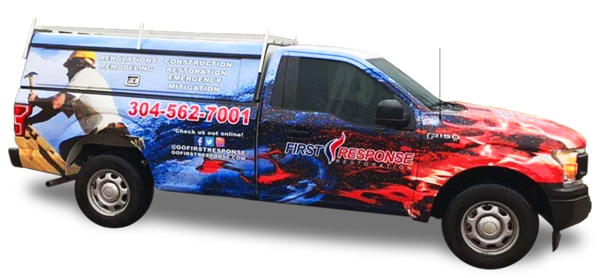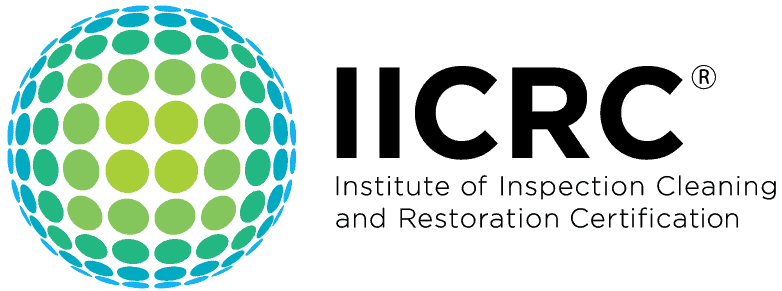Effective Techniques for House Flood Restoration
Key Takeaways:
- Quick action is crucial when dealing with a flooded house to prevent further damage and the growth of mold.
- Assess the damage and prioritize safety before starting the drying process
- Various water extraction methods can be used to remove standing water from your flooded house.
- The dehumidification process is essential to eliminate excess moisture from your home.
- In addition to drying out your home, it’s essential to restore and repair the areas affected by the flood.
Assessing the Damage and Ensuring Safety
Before beginning the process of drying out your flooded house, assess the extent of the damage and prioritize safety. Water damage cleanup can be dangerous, so it’s essential to take necessary precautions. Most of the time you should hire a water damage restoration company like First Response Restoration in West Virginia to handle it for you.
First, turn off the power supply to your home. Water and electricity do not mix, and electrical hazards could occur due to the flooding. Make sure you wear protective gear, including gloves and boots.
Next, evaluate the damage to your house. Check for damage to the foundation, walls, and floors. Take note of any water-soaked materials, including carpets, curtains, and furniture. Discard anything that is beyond repair or poses a health risk.
To prevent mold growth in your flooded house, it’s crucial to remove as much standing water as possible. Use pumps, wet vacuums, and mops to extract the water. Make sure to dry all surfaces and materials thoroughly to prevent any lingering moisture.
If the water has reached your basement, take extra precautions. Basements are often damp, which can exacerbate the moisture problem. Invest in additional dehumidifiers and fans to help dry out the area.
Once the water has been extracted, disinfect all surfaces to prevent the growth of bacteria or other pathogens. Use a solution of bleach and water to clean all hard surfaces.
It’s essential to address any potential mold growth quickly. If you notice mold or a musty odor, it’s crucial to act immediately. Mold can cause health problems, including respiratory issues and allergies. Consider hiring a professional for mold remediation to ensure a thorough cleanup.
Water extraction methods
When dealing with a flooded house, the first step is to extract the water as quickly as possible to prevent further damage. There are several water extraction methods to choose from, depending on the severity of the flood and the type of surfaces affected.
Here are some effective water extraction methods:
Method
Description
Using a wet vacuum
A wet vacuum is a specialized tool used to extract water from floors, carpets, and upholstery. It works by using powerful suction to remove water and debris from surfaces.
Using a sump pump
If a basement is flooded, a sump pump can be used to remove water. The pump collects water in a basin and pumps it outdoors or into a drain.
Using a water extraction machine
A water extraction machine is a commercial-grade tool that uses high-powered suction to remove water from carpets, floors, and other surfaces. It’s effective for large-scale floods and can extract water quickly.
Once the standing water has been removed, it’s important to begin the drying process as soon as possible to prevent mold growth and other issues. If you’re dealing with a flooded basement, it’s especially important to ensure that the space is properly dried out to prevent the development of mold and mildew.
Here are some tips for drying a flooded basement:
- Open windows and doors to increase air circulation.
- Use fans to speed up the drying process.
- Consider using a dehumidifier to remove excess moisture from the air.
- Remove any wet materials such as carpet, furniture, and drywall.
- Use a wet vacuum or mop to remove any remaining puddles or pools of water.
By using the appropriate water extraction methods and following these tips, you can effectively dry out a flooded house and prevent further damage to your home.
Dehumidification process and moisture removal
After extracting the water from your flooded house, the next step is to eliminate excess moisture using a dehumidification process. This is essential in preventing long-term issues such as mold growth.
There are several effective dehumidification techniques you can use to remove moisture from the air in your home. One common method is to use a dehumidifier, which is a device that draws in moisture-laden air and extracts the water using a cooling system. Another option is to use fans and natural ventilation to circulate air and reduce humidity levels.
In addition to dehumidification, there are several moisture removal tips you can follow to ensure all areas of your home are thoroughly dried. This includes drying wet walls using fans and dehumidifiers, as well as removing any wet carpet or furniture from the affected areas.
Moisture Removal Tips:
- Use fans to circulate air and reduce humidity levels
- Open windows and doors to increase ventilation
- Remove any wet carpet or furniture from the affected areas
- Use a dehumidifier to draw in moisture-laden air and extract the water
By following these moisture removal tips and using effective dehumidification techniques, you can ensure your home is thoroughly dried out and free from excess moisture.
Restoring and repairing the damaged areas
After the drying process, it’s crucial to focus on restoring and repairing the areas affected by the flood. The first step is to assess the damage to your house, which includes structural damage and cosmetic issues. It’s essential to prioritize safety and seek professional assistance for any major structural damage.
Once the damage has been assessed, it’s time to start the restoration process. Repairing damaged structures is essential to maintain the integrity of your home. This includes fixing broken beams, reinforcing weakened walls, and repairing damaged foundations.
After addressing any structural damage, it’s time to make cosmetic repairs to your home. This includes repainting walls, replacing damaged flooring, and fixing any broken fixtures. It’s essential to ensure that your home is restored to its pre-flood condition, not only to improve its appearance but also to prevent future water damage.
In some cases, it may be necessary to replace certain items that cannot be salvaged. For example, furniture that has been severely damaged by water may need to be replaced. It’s important to consider the cost of replacement versus restoration when making these decisions.
To ensure the restoration process is completed correctly, it may be necessary to seek professional assistance. A professional restoration company can help you assess and repair the damage to your home, ensuring that it is restored to its pre-flood condition.
Restoring and repairing the damage caused by a flood can be a time-consuming and expensive process. However, it’s crucial to prioritize the restoration process to prevent future water damage and ensure that your home remains safe and healthy for you and your family.
Conclusion
Coping with a flooded house can be overwhelming, but it doesn’t have to be. With the right techniques and tools, you can dry out your home and restore it to its pre-flood state. Remember to prioritize safety throughout the process, and never underestimate the power of professional assistance.
We hope you found this guide useful in your journey to restore your flooded house. By following the steps outlined in this article, you can minimize the risk of long-term issues such as mold growth and ensure a thorough cleanup.
Remember, the key to successful house flood restoration is remaining patient and focused on the task at hand. With diligence and care, you can bring your home back to life and create a safe, healthy environment for you and your loved ones.
FAQ
To dry out a flooded house, it is important to follow a systematic approach. First, assess the damage and ensure safety. Then, use water extraction methods to remove standing water. Next, implement a dehumidification process to eliminate excess moisture. Finally, restore and repair the damaged areas to bring your house back to its pre-flood condition.
Assessing the damage helps you understand the extent of the water damage and prioritize the necessary actions. It ensures that you address any potential safety hazards before starting the drying process. Additionally, assessing the damage allows you to identify areas that may require professional assistance.
There are several water extraction methods that can be used to remove standing water from a flooded house. These include using pumps, wet vacuums, and mops. It is important to choose the appropriate method based on the amount of water and the type of flooring or surfaces affected.
The dehumidification process involves using dehumidifiers to remove excess moisture from the air. These machines extract moisture from the surrounding environment and collect it in a reservoir. By reducing the humidity levels, the dehumidification process aids in drying out the affected areas and preventing mold growth.
Restoring and repairing the damaged areas involves several steps. This may include repairing structural components, such as drywall or flooring, and addressing any cosmetic issues, such as repainting. It is important to consult with professionals if there is extensive damage or if specialized skills are required for the restoration process.

















